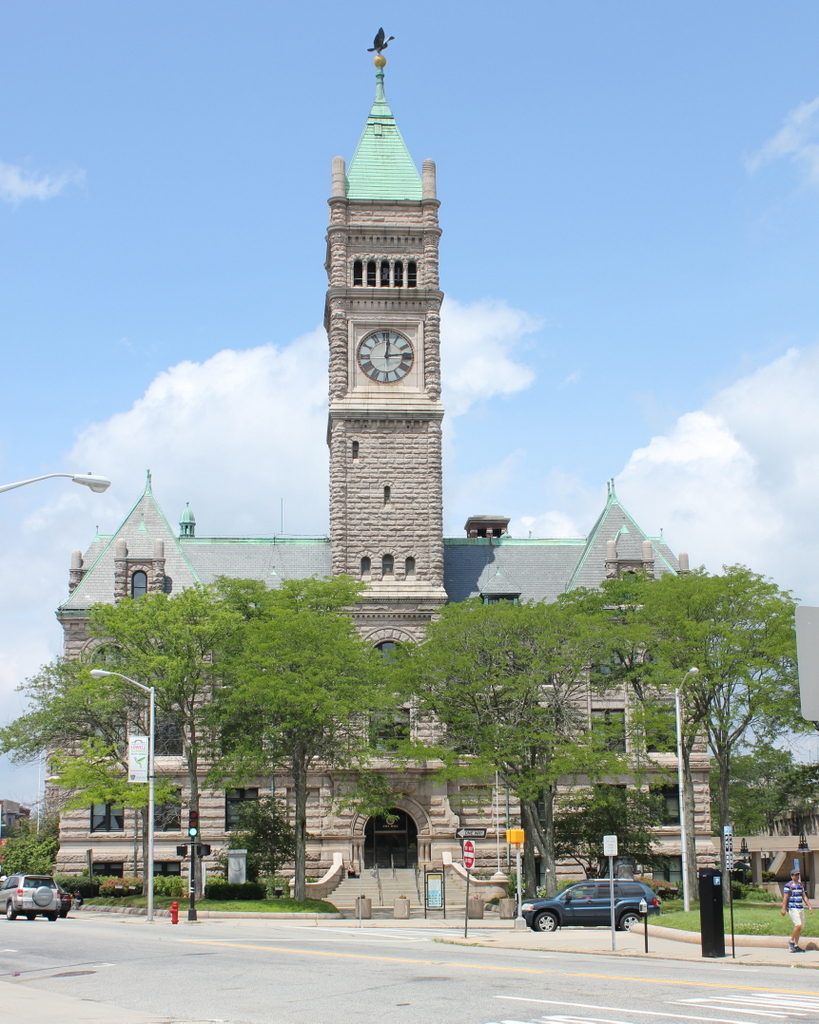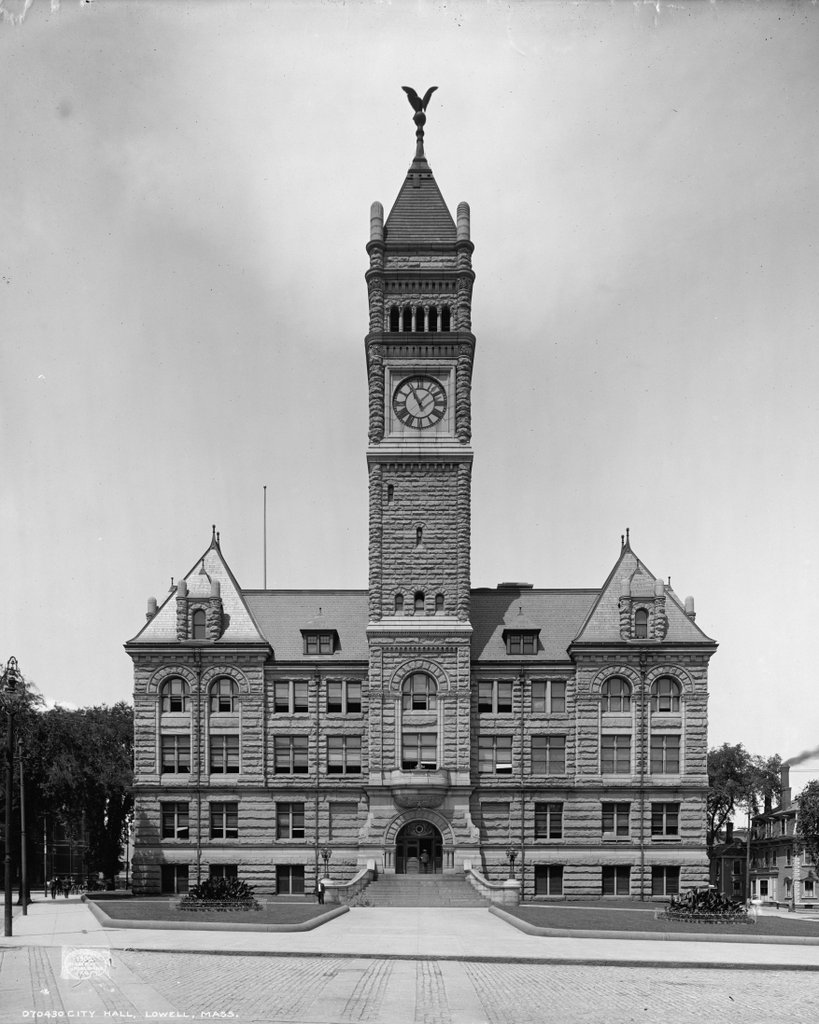Lowell City Hall, photographed around 1908. Image courtesy of the Library of Congress, Detroit Publishing Company Collection.
City Hall in 2015:

There aren’t many centrally-planned cities in New England. Most grew over time out of 17th century Puritan settlements, but the city of Lowell was different. Planned from the start as an industrial center, Lowell was one of the leading manufacturing cities in the country for much of the 19th century, and toward the close of the century its prosperity led to the construction of a new city hall. It was dedicated in 1893, and represents the Romanesque style of architecture that was common in late 19th century America, especially in government buildings and churches. At the time, the city was the third largest in the state, after Boston and Worcester, with an economy based largely on the textile industry.
The city reached its peak of prosperity soon after the first photo was taken, but by the 1920s the factories began to close as industries relocated to other parts of the country. Today, there isn’t much manufacturing left in the city, but the population has rebounded to pre-World War I levels, with many of the former factories being redeveloped and reused for housing and commercial space. City Hall is still in use, and is relatively unchanged from over a century ago. It forms the centerpiece of the City Hall Historic District on the National Register of Historic Places, and it is just a few blocks away from the Lowell National Historical Park, where many of the historic factory buildings have been preserved as museums.

